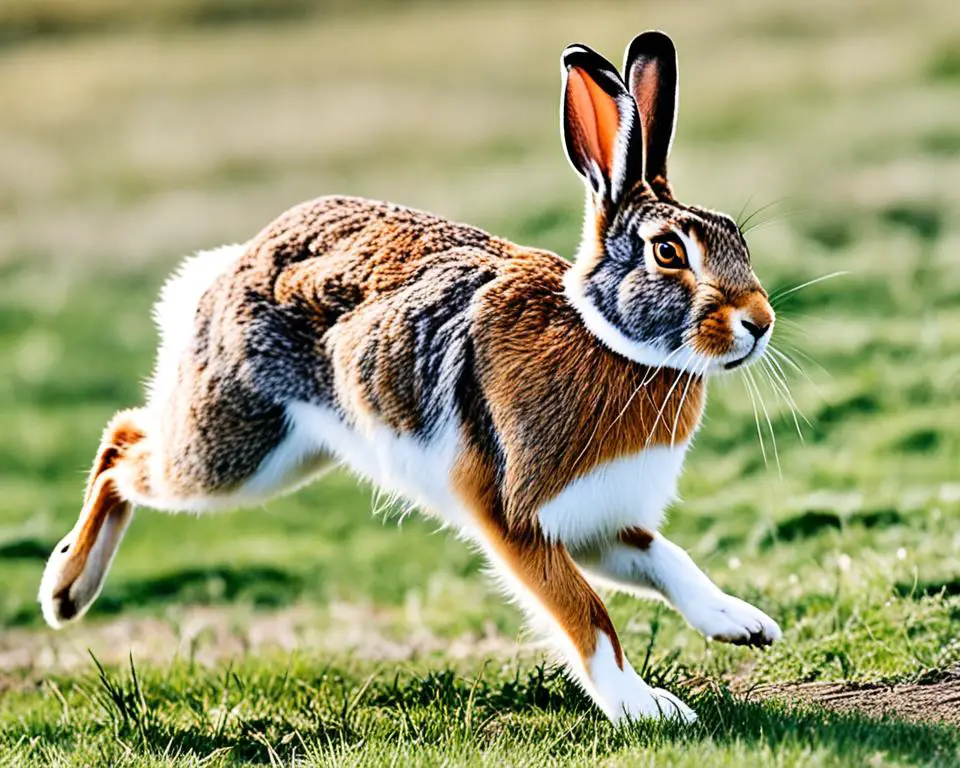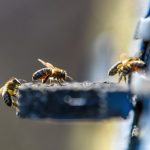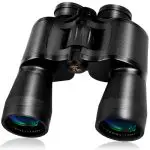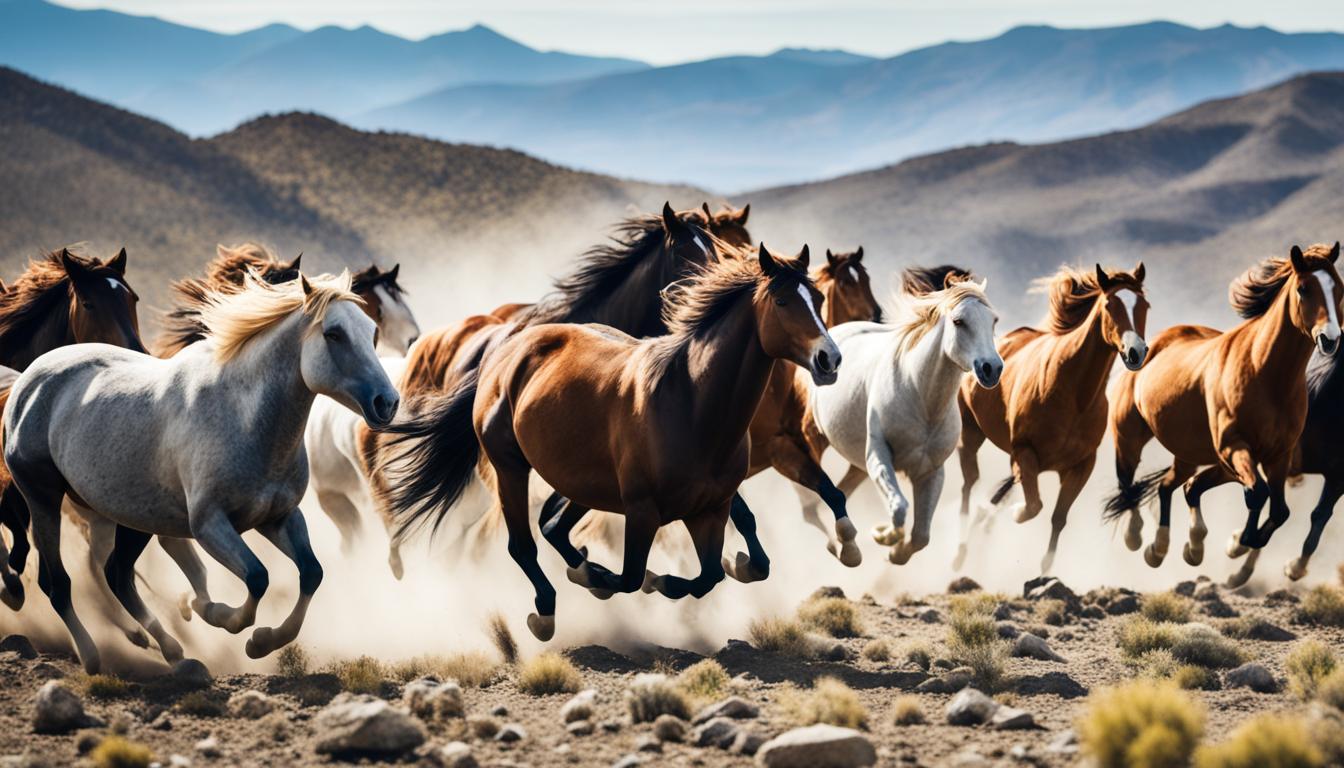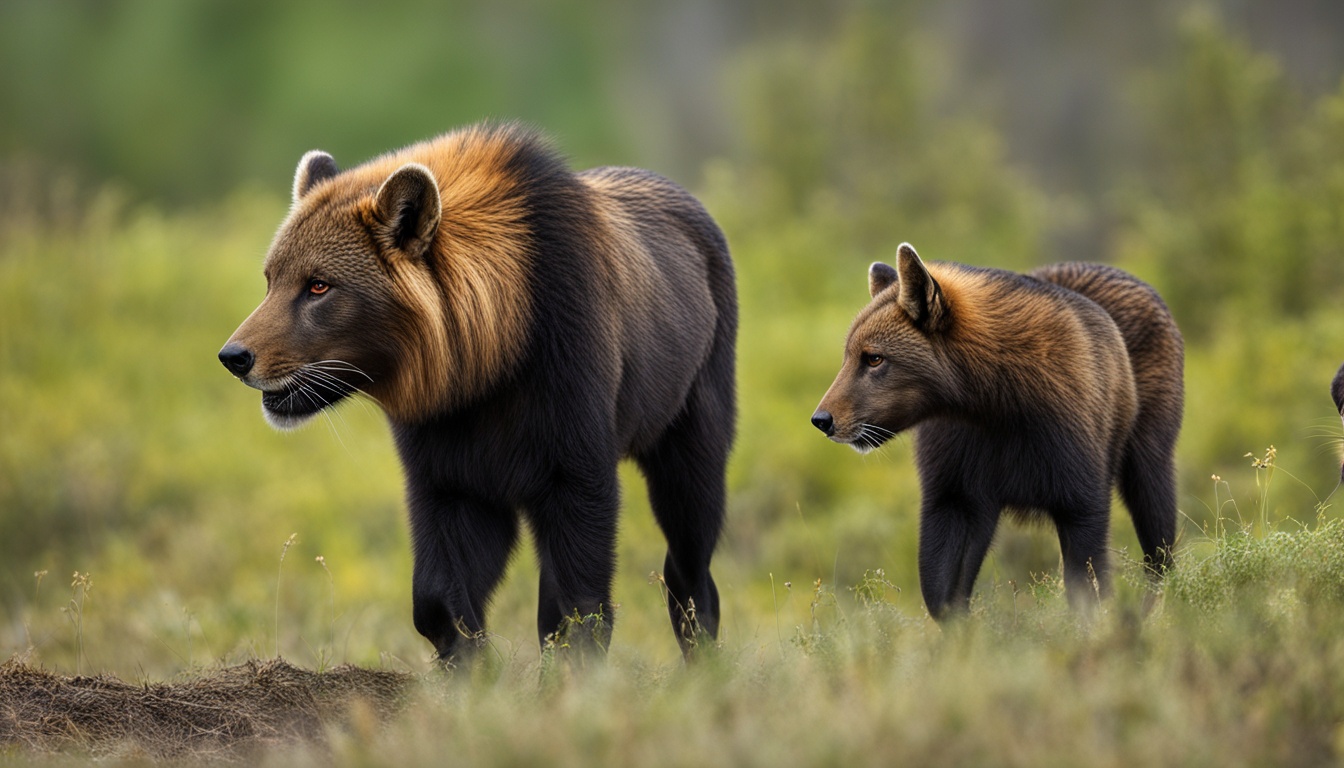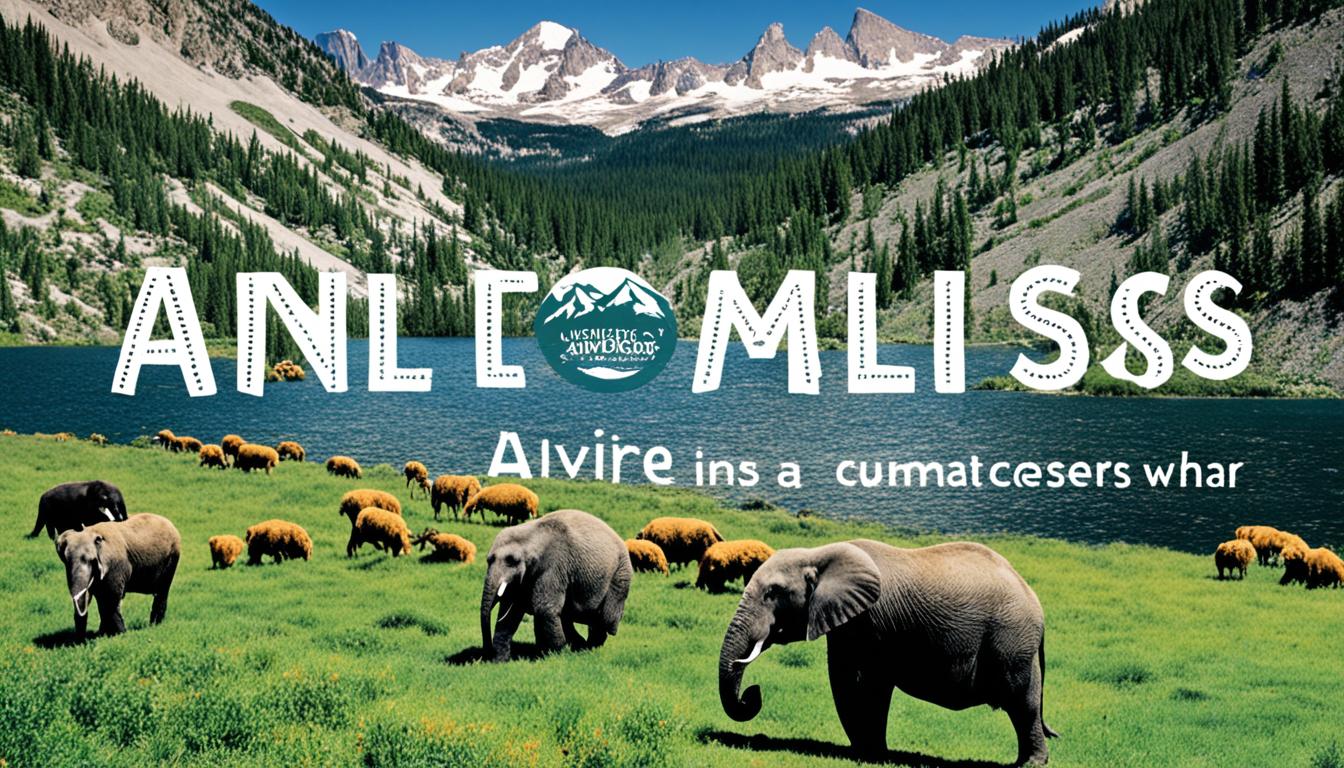Welcome to a journey through the fascinating hare trivia that’s bound to surprise you. When you think of speedy mammals, perhaps hares don’t immediately spring to mind, but they should. Beyond their adorable looks and the confusion with their rabbit relatives, hares boast unique characteristics that make them truly remarkable creatures.
Getting to know these fleet-footed animals will unveil a world where speed is survival and agility is artistry. Hares don’t just dot the landscape; they animate it with their swift dashes and zigzag maneuvers. And there’s more to them than just their pace. Their behavior, habitat choices, and even their role in culture and gastronomy are as intriguing as their physical capabilities.
So, gear up for an exhilarating exploration into the world of hares, where every fact is a step into the wild rhythm of these extraordinary animals. You’re about to discover why hares are not just a subject of childhood fables but a fascinating topic for anyone interested in the wonders of wildlife.
Distinguishing Hares from Rabbits
At first glance, you might mistake a hare for its cousin, the rabbit. Yet, upon closer examination, you’ll find that hare species boast unique traits incomparable to those of the rabbit. Recognizing these differences is essential for wildlife enthusiasts and aids in understanding both creatures’ roles in their ecosystems.
Characteristics That Set Hares Apart
One of the most striking features setting hares apart from rabbits is their impressive size. Possessing longer ears and legs, hares are designed for speed—a unique trait that speaks volumes about their wildlife behavior. As opposed to rabbits, who birth their young in protective burrows, hares give birth to leverets fully furred and with eyes open, ready to face the open world. This wildlife strategy showcases the hare’s adaptability and independence.
Understanding Hare Behavior vs Rabbit Behavior
In the world of mammals, behavior is as important as physical attributes when distinguishing between species. Compared to the sociable rabbit, which prefers group living, the hare is typically a solitary creature, only socializing during breeding season. This behavior exemplifies the mammal comparison between hares and rabbits, with the former evolved for survival in the wild. The hare’s solitary lifestyle is a fascinating glimpse into the diversity of wildlife behavior and survival strategies.
| Feature | Hare | Rabbit |
|---|---|---|
| Size | Larger with longer legs and ears | Smaller, more compact body |
| Birth | In the open, fully furred and eyes open | In burrows, blind and hairless |
| Social Behavior | Solitary except during breeding | Social, prefers group living |
| Physical Build | Lean and built for running | Smaller and less muscular |
| Lifestyle | Wild, rarely domesticated | Often domesticated as pets |
Habitats of Hares Worldwide
Have you ever wondered where hares call home? These adaptable creatures have a global distribution that spans various continents, showcasing their ability to thrive in diverse environments. The natural vegetation and open spaces they favor are crucial for their survival and are as varied as the regions they inhabit.
Whether you’re trekking through the vast grasslands of Africa, the temperate woodlands of Eurasia, the prairies of North America, or even encountering the rare habitats in parts of Japan, you’re witnessing the wide-reaching hare habitats. Each of these areas provides the natural vegetation necessary for shelter and sustenance, as well as the open spaces required for their signature high-speed escapes.
Let’s delve into the specifics:
- In Africa, hares are often seen in savannas where grasses and small bushes offer both food and cover.
- The Eurasian landscapes range from forests to agricultural fields, providing a mosaic of habitats for hares.
- North America’s diverse climates serve as a backdrop for hare populations in both the arid deserts and the chilly northern plains.
- Meanwhile, parts of Japan‘s countryside feature the necessary conditions for the hare’s continued presence.
Now, imagine the hare’s world – a patchwork quilt of regions, each piece with its own pattern of flora and room to roam. These regions not only showcase the hare’s adaptability but also highlight the importance of conservation efforts to maintain the natural ecosystems that support these animals. Hares depend deeply on these habitats, not just for survival, but to continue playing their vital role in the biodiversity of our planet.
The Remarkable Speed of Hares
When you think of the fast land animals that roam our planet, the image of a hare sprinting across an open field may not immediately come to mind. However, these animals exemplify one of nature’s finest examples of speed and agility. With their remarkable aptitude for rapid movement, hares have honed evolutionary adaptations that facilitate impressive bursts of speed, making them standout performers in the animal kingdom.
Comparing Hare Speed with Other Mammals
When lined up against other members of the animal kingdom, hares take a leading position with their ability to reach speeds of up to 45 miles per hour. This phenomenal rate of motion places them among the elite group of the world’s fastest land mammals, a list that includes the swift cheetah, pronghorns, and the lion. Yet, what’s particularly intriguing about hares is their agility at these high speeds, allowing for sudden changes in direction to elude capture.
How Speed Helps Hares Survive
The natural world is an arena of constant survival challenges, and for a hare, speed is survival. Its ability to accelerate swiftly is not just for show; it’s a critical survival mechanism. In the wild, hares are preyed upon by a variety of creatures, including owls, hawks, foxes, and coyotes. Humans too have sought hares for both sustenance and sport. In these instances, a hare’s swiftness becomes its best defense, often being the difference between life and death.
Their incredible speed is a product of evolutionary adaptations designed to enhance their ability to navigate through challenging environments. This extends to their reproductive freedom, as a hare can quickly flee from threats even when nurturing their young. The open grasslands and meadows they inhabit provide the perfect backdrop for these high-speed chases, with the hare almost always having the edge thanks to its finely tuned reflexes and musculature.
| Mammal | Top Speed (mph) | Adaptations for Speed |
|---|---|---|
| Hare | 45 | Powerful hind legs, large heart, lean body |
| Cheetah | 60-75 | Flexible spine, non-retractable claws, long tail for balance |
| Pronghorn | 55 | Large lungs, heart, and windpipe for oxygen intake; cushioned hooves |
| Lion | 50 | Strong muscular build, explosive power, claws for grip |
Hare Sight and Hearing: Natural Surveillance Systems
Have you ever marveled at how a hare can seemingly evade threats with such precision and grace? This remarkable feat is largely thanks to a hare’s acute senses. In the precarious realm of wildlife survival, a hare’s sight and hearing are akin to state-of-the-art surveillance systems, finely tuned over millennia to detect even the most subtle cues of danger.
Renowned for their **hare senses**, these animals boast a **field of vision** that’s nearly panoramic, allowing them to monitor their surroundings with minimal movement. This wide-set gaze is pivotal for **predator detection**, allowing hares to spot dangers from afar and take swift action to escape. Their large ears, perpetually twitching and turning, can pick up faint sounds across distances, further enhancing their defense systems.
Imagine having a sensor that alerts you to the slightest rustle in the grass, the quietest swoop of an owl, or the stealthy steps of a fox. That’s the daily reality for hares. These **wildlife survival** skills are not just impressive; they are imperative for the hare’s continual existence in the wild.
Understanding the importance of these natural gifts is crucial—they are not just fascinating tidbits for the curious mind but also central aspects of an evolutionary success story written in the annals of nature. It is through their superior sensory capabilities that hares have been able to thrive in a world replete with predators.
Knowing this, the next time you catch a glimpse of a hare in the wild, you might appreciate the sight not just for its beauty but for the intrinsic genius of nature that has equipped these creatures for the ultimate test of life.
The Herbivorous Diet of Hares
As you explore the world of hares, it’s captivating to discover that these agile creatures maintain a strict herbivorous diet. Their survival is intricately linked to the environment, relying on a plant-based feeding regimen to sustain their active existence. Delve into the dietary habits of hares and the special digestive system that supports their nutritional needs.
What Hares Eat: From Grass to Fruit
The staples of a hare’s diet consist of a variety of plant-based options. As herbivores, they graze on:
- Grass – Their primary source of food, providing essential fiber.
- Flowers – Offering a seasonal treat that adds to their diverse intake.
- Seeds – A valuable source of protein within their herbaceous diet.
- Vegetables – Delivering necessary vitamins and minerals found in nature’s bounty.
- Fruits – Consumed sparingly, providing a sweet burst of energy.
Through their varied diet, hares not only fulfill their nutritional needs but also play a crucial role in their ecosystems by dispersing seeds and aiding in plant pollination.
Special Digestive Adaptations in Hares
What sets hares apart in their ability to thrive on a diet of fibrous plant material is an exceptional digestive system. To maximize nutrient extraction from their high-fiber fare, hares have evolved a specialized gut that recycles certain foodstuffs. This process, known as hindgut fermentation, allows hares to re-ingest partially digested food, ensuring that they extract every possible nutrient.
| Plant-Based Feeding | Benefits for Hares |
|---|---|
| Fiber-rich grass | Sustains digestive health, essential for energy |
| Diverse vegetation | Provides a balanced mix of vitamins and minerals |
| Hindgut fermentation | Efficient digestion enabling nutrient reabsorption |
Incorporating these digestive techniques, hares maintain their sleek physiques and boundless energy, necessary for their survival in the wild. Observing a hare’s feeding patterns provides insight into the intricacies of herbivorous diets and their critical roles within natural food chains.
Reproduction: Hare’s Rapid Breeding Capabilities
Delving into the world of hare reproduction, one cannot help but be astounded by their impressive breeding efficiency. These mammals are well-known for their ability to produce multiple litters each year, a vital trait for their survival and propagation across diverse habitats.
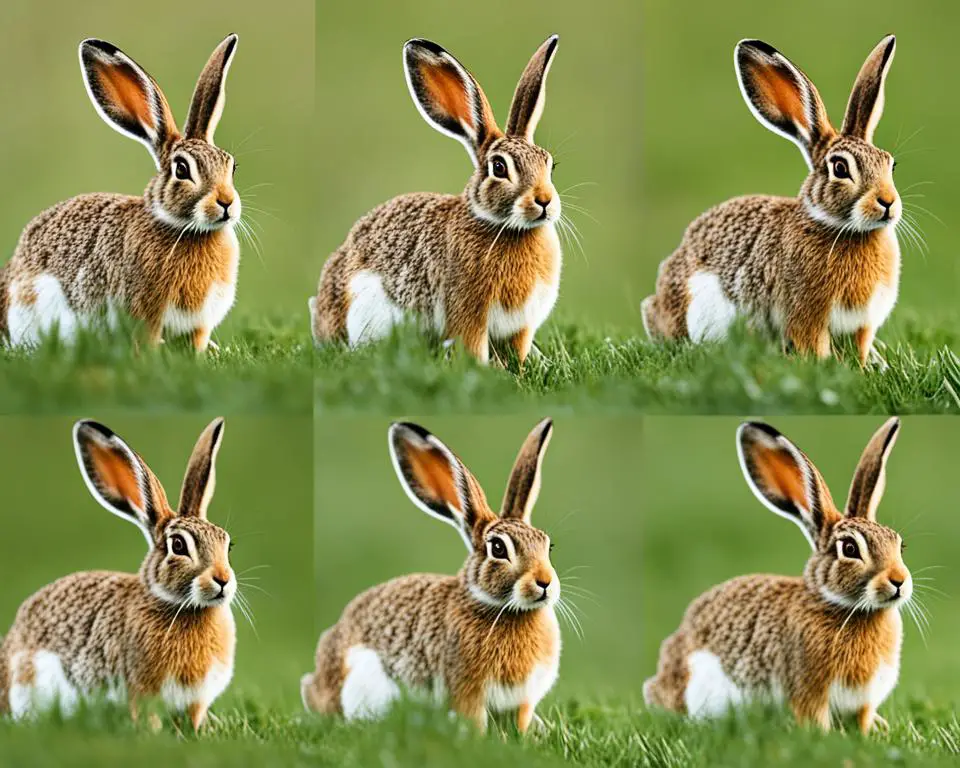
Female hares have a reproductive edge in the animal kingdom. They can become pregnant almost immediately after giving birth, with short gestation periods allowing for the possibility of extensive offspring during their lifespan. This quick turnaround in their breeding cycle is a key factor contributing to the proliferation of hare populations in the wild.
Their reproductive success is not just about quantity but also about the strategic timing of litters. Leverets are born fully furred and with their eyes open, ready for the challenges of their environment, and the continued ability to reproduce swiftly allows for hares to maintain their numbers despite facing numerous predators.
| Reproductive Trait | Description | Advantage in the Wild |
|---|---|---|
| Gestation Period | Short durations between litters | Rapid expansion of population |
| Leveret Development | Born fully furred, eyes open | Immediate adaptability to environment |
| Maternal Turnaround | Ability to conceive shortly after birth | Enhances survival rate of species |
This rapid-fire approach to replication sets an exciting pace for these mammals and underscores the importance of their role in our ecosystems. As we observe and appreciate the wonders of hare life, it’s paramount that we also consider our impact on their delicate reproductive cycles and the broader environments that support them.
Rituals and Dominance: Understanding Hare ‘Boxing’
Witnessing two hares engage in what appears to be a fierce bout of fisticuffs is a scene that piques the curiosity of many nature enthusiasts. This phenomenon, known as ‘boxing’, is a crucial aspect of hare behavior and pertains to their mating rituals and the dynamics of animal dominance. But what does this behavior signify in the world of hares?
The Mating Game: What ‘Boxing’ Really Means for Hares
During the breeding season, male hares participate in ‘boxing’—a unique combat form where they stand on their hind legs and trade blows with their front paws. This conspicuous display serves a dual purpose: males establish dominance over their rivals and demonstrate their vigor to potential mates. However, a twist in this tale of pugilism is that ‘boxing’ can also involve females warding off overly persistent suitors. Through this interaction, hares communicate vital information about their readiness to mate and their suitability as partners.
| Participant | Role in ‘Boxing’ | Behavioral Purpose |
|---|---|---|
| Male Hares | Aggressor | Establishing dominance and eligibility for mating |
| Female Hares | Defender | Selection of mate and fending off unsuitable partners |
| Observers | Passive Witnesses | Learning from interactions, awaiting turn to engage |
Understanding this aspect of hare life sheds light on the complex social structures and behaviors that govern the natural world. While on the surface it might look like mere aggression, ‘boxing’ is enmeshed in the fabric of reproductive success for hares and is emblematic of the critical interplay between survival and reproduction. As onlookers, we gain insight into the rich tapestry of wildlife interaction and the enduring dance of dominance and selection that shapes the lives of these fascinating creatures.
Symbiotic Relationships: Hares and Birds
As you wander through the wild, observing the intricate dance of nature, you may stumble upon one of the most remarkable symbiotic wildlife relationships known to ecologists. This mutualistic bond between hares and birds, such as the Arctic tern and the snowy owl, showcases a unity that enriches the survival of both species. Let’s further unravel the essence of this alliance and its impact on their nesting behavior.
In the rugged terrains and untamed grasslands where hares flourish, their alliance with birds transcends mere coexistence. Here, the hare’s burrowing creates verdant nesting sites, carving out a safe cradle for birds to lay their eggs. In return, these avian protectors, with their vigilant eyes and sharp talons, offer an additional layer of defense against common predators, forming a natural bulwark around the hare’s domicile.
Picture this serene tableau: a snowy owl perched atop a small mound, under which a hare’s burrow nestles. The owl’s presence deters many would-be aggressors, ensuring safety for the hare below. Meanwhile, the Arctic tern, a traveler of the skies, finds repose in these verdant quarters, often swooping in to stake a claim, and further extending the sentry line against shared enemies.
Engaging in this mutualistic arrangement, both hares and their avian companions benefit from increased survival rates. For the birds, the burrows are a readily available and secure retreat—a priceless commodity in the scarcity of the tundra and other harsh environments where the competition for nesting sites is fierce. For the hare, the avian alliance equates to an alarm system against predators, a serendipitous guard detail amid nature’s unforgiving climes.
| Species | Role in Symbiosis | Benefit Received |
|---|---|---|
| Hares | Provide nesting sites | Protection from predators |
| Arctic Tern | Uses burrows for nesting | Safe environment for offspring |
| Snowy Owl | Perches near hare habitats | Abundant hunting opportunities |
In the grand tapestry of the ecosystem, the relationship between hares and their feathered friends stands out as a brilliant thread of interdependence. As custodians of nature, it’s essential that we recognize and preserve these alliances that not only encapsulate symbiotic wildlife relationships but also foster a resilient fabric for life itself.
Seasonal Camouflage: Hares’ Changing Coat Colors
Imagine strolling through a winter wonderland, and you spot a hare, virtually invisible against the snowy backdrop—this is the marvel of adaptative camouflage. Hares are one of nature’s most skillful shape-shifters, achieving impressive seasonal fur color change to seamlessly blend into their surroundings. This remarkable change is a prime example of environmental adaptation, providing hares with a tactical advantage in the wild.
Their winter white fur is not a mere twist of nature; it’s a survival strategy. As snow blankets their habitat, hares don a white coat that masks their presence from predators and aids their hunting endeavors. When the season turns and the white landscape recedes, the hares transition yet again. The white fur gives way to brown, harmonizing with the earth and foliage of summer and fall, offering them continued concealment from threats.
The science behind this extraordinary seasonal fur color change lies in photoperiods—the length of daylight. As the days grow shorter, hares’ fur growth shifts in response to the changes in light, initiating the growth of their winter coat. Conversely, as daylight extends, the signal to shed and grow a darker, summer coat ensues, allowing them to match the thawing landscape.
- In winter, the hare’s white coat counters the piercing gaze of predators in the snow.
- As spring arrives and the snow melts, patches of brown fur begin to appear, providing a mosaic that blends with the surrounding thaw.
- In summer, the hare’s fully brown coat camouflages it against the vibrant greens and browns of the vegetation.
- When fall approaches and days shorten, a gradual transition back to white starts, preparing the hare for the coming winter.
This adaptative process does not merely add to the hare’s stealth; it also cues us into environmental changes. As researchers note shifts in the timing of these changes, they gain insights into broader climate patterns. Thus, the hare’s coat serves as a furry barometer of ecological shifts, tying its life cycle to the broader context of environmental changes on our planet.
| Season | Fur Color | Advantage |
|---|---|---|
| Winter | White | Predator evasion through snow camouflage |
| Spring | Transitioning (White with Brown patches) | Blends with melting snow and emerging ground |
| Summer | Brown | Camouflage with ground and vegetation |
| Fall | Transitioning back to White | Preparation for winter camouflage |
It’s this splendid adaptative flair that not only ensures the hare’s survival but also bewitches wildlife watchers, revealing the intricate bond between animal and environment. As you peer into the world of hares, their seasonal transformations become a testament to the enduring capacity of nature to thrive, adapt, and enchant.
Hares in Gastronomy: A Delicacy for Some
Have you ever considered the role of hares in the culinary world? For many, the idea of eating hare meat may seem unconventional. Yet, in various cultures, this type of game meat is a prized culinary delicacy, savored for its rich and nuanced flavor. However, the gastronomic appreciation of hare comes with its own set of ethical and environmental considerations that reflect the complexities of modern hunting practices and wildlife conservation.
Hare Meat in Different Cultures
Hare meat has been featured on the tables of gourmet restaurants and in home kitchens alike. From the rolling hills of the European countryside to the expansive lands of North America, eating hare has been a tradition rooted in history and practicality. In some regions, hare is considered the epitome of wild, natural food, serving as a testament to a rich hunting heritage that predates factory farming and mass-produced meat.
Conversely, the perception of hares can be dramatically different across the world. In places where these animals are abundant, they may be seen as agricultural pests, with their hunting encouraged as a means of population control. The diversity in how hares are viewed globally paints a vivid picture of the intricate relationship humans share with wildlife and local ecosystems.
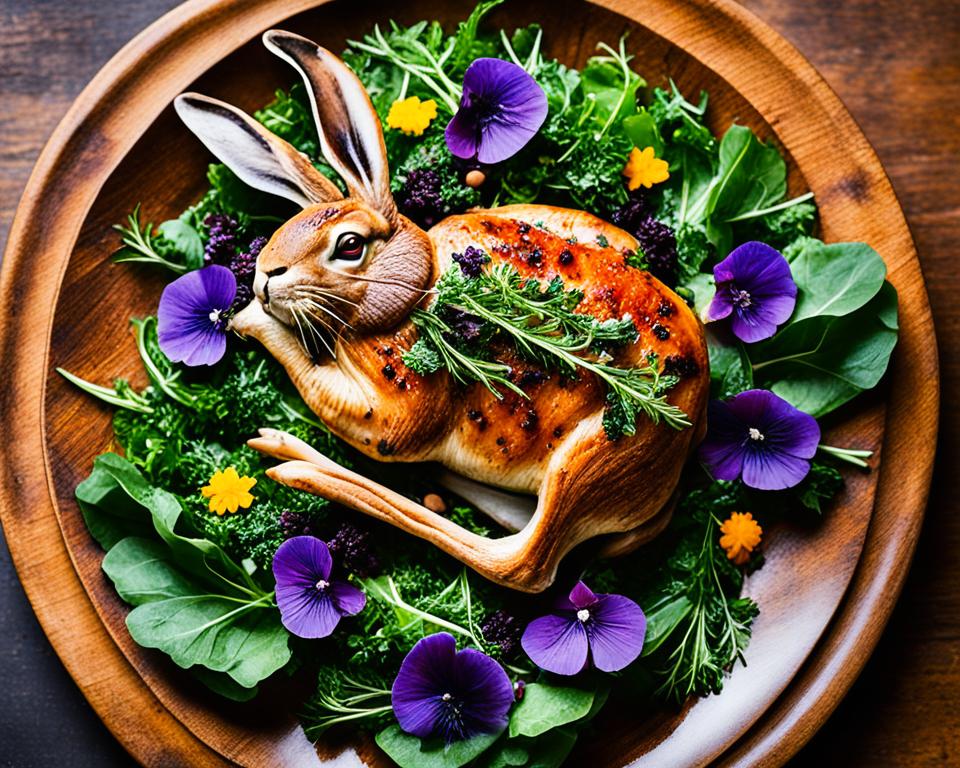
Conservation and the Ethics of Hunting Hares
Delving into the debate on hunting hares opens a Pandora’s box of conservation and ethical issues. Advocates of sustainable hunting practices emphasize the importance of maintaining a balance between enjoying hare as a culinary delicacy and ensuring the species thrives for future generations. Hunting regulations, season restrictions, and bag limits are some of the measures implemented to mitigate the impact on hare populations and promote wildlife conservation.
However, opinions are deeply divided. While some view regulated hunting as an integral part of conservation, others argue that the killing of hares for food or sport is inherently unethical. The dilemmas posed by these contradictory views make it clear that the intersection of gastronomy and wildlife presents a complex, often contentious, set of challenges that must be navigated with care.
Whether you indulge in hare as a succulent treat or stand opposed to its place on the menu, this discussion invites you to consider your own values concerning the natural world. As we weigh our gastronomic desires against the imperative of conservation, understanding the broader implications of our choices becomes essential to forging a responsible path forward.
| Aspect | Gastronomic Status | Conservation Concern |
|---|---|---|
| Cultural Appreciation | Prized as a delicacy in certain cultures | Need for balance between consumption and population health |
| Perception as Pests | Controlled hunting in agricultural areas | Question of ethical treatment and species management |
| Regulated Hunting | Supports traditional culinary practices | Integral to sustainable wildlife conservation efforts |
| Ethical Debate | Variable acceptance of hare meat consumption | Conservationists and animal rights advocates’ ongoing dialogue |
Hares in Folklore and Literature
Throughout times past and into the present, hares have hopped their way into our hearts through their cultural symbolism, appearing in various forms across folkloric representation. Imbued with a sense of wonder and mystery, these creatures are often used to impart timeless lessons and reflect societal values. Have you ever considered the implications of the hare in your favorite childhood fable?
In numerous narratives, the hare emerges as a pivotal character – a symbol of fertility and new beginnings, echoing the fertility of the earth with their rapid breeding and springtime frolicking. This portrayal rings true across cultures, where celebrating the hare’s vitality becomes synonymous with the blossoming of life itself.
Additionally, the hare’s image as a trickster archetype is widely recognized, presenting a sharp-witted, sometimes mischievous personality that adds depth to its character. Consider Aesop’s ‘The Tortoise and the Hare’, arguably one of the most prominent tales in which the hare, brimming with confidence and speedy agility, ultimately succumbs to its own hubris. This story, among others, uses the hare’s traits to convey caution against overconfidence and the virtue of persistence.
But it’s not all about lessons and morals; the hare’s role in literature also brings a touch of the whimsical and an element of unpredictability that captivates readers’ imaginations. Whether it’s the hare’s playful bounding through the fields in a pastoral poem, or its clever antics outwitting predators in a thrilling tale, the hare’s presence adds a multifaceted layer to storytelling.
- The **fertility** of the hare makes it a common symbol of abundance and renewal, especially during the spring season.
- The trickster persona of the hare often serves as a nuanced representative of the agile and quick-thinking individual.
- In folklore, the hare can be a conduit for exploring themes of **natural wisdom** and the delicate balance of ecosystems.
Whether in the oral tradition of storytelling, the binding of ancient texts, or the digital pages of contemporary literature, the hare’s representation transcends mere character. It becomes an allegory for various human experiences and a vessel for cultural expression. The next time you encounter a hare in a story, pause and ponder – what deeper meaning could this enigmatic creature be harboring? Your engagement with these characterful creatures may never be the same.
The Physical Prowess of the Brown Hare
Behold the impressive figure of the European hare, a creature that is the embodiment of muscular strength and agility. Known for its robust build, the brown hare showcases physical capabilities that are the envy of other agile mammals. Arguably one of the most formidable species native to Europe and Asia, this hare isn’t just swift; it’s a powerhouse of endurance and speed. Let’s delve into the attributes that set this animal apart in the wild.
Your breath catches as you watch this agile mammal dart across the countryside, its powerful hind legs propelling it at speeds that blur the lines of the observer’s vision. What is the secret behind this remarkable display? A culmination of evolutionary finesse ensures that the brown hare possesses muscular strength that’s optimized for high-velocity sprints. It’s a masterclass in anatomy geared for survival.
- The hind legs of the brown hare are not just for show; they are impressively strong. Each muscle fiber contributes to the explosive power it exhibits when evading predators.
- Their agility is evident in their ability to make quick and sharp turns even at full speed, a crucial maneuver to outsmart those with predatory intentions.
- During the spring, when mating season turns the fields into arenas of chase and challenge, the brown hare’s strength is on full display as males and females engage in their characteristic ‘boxing’ matches.
As the sun dips below the horizon, painting the sky with dusky hues, the European hare settles into the scant cover provided by the foliage. It doesn’t nest like other creatures but instead relies on its strength and vigilance to rest in the open. So the next time you’re traversing the vast fields and spot this embodiment of strength, take a moment to appreciate the sheer power and agility bestowed upon the brown hare — nature’s own athlete.
Adaptation to Open Land: Hares Above Ground
If you’ve ever marveled at the dexterity of rabbits darting in and out of burrows, be prepared for an introduction to the non-burrowing species of their ilk, the hares. Unlike their subterranean cousins, hares exhibit a remarkable terrestrial adaptation that is uncommon among lagomorphs. This distinction is more than mere preference—it reflects their evolutionary path and defines their relationship with wildlife habitats.
Through the course of adaptation, hares have developed characteristics that enable them to thrive in open land environments. As you walk through meadows or grasslands, notice the subtle depressions in the field; these are the hare’s domains—simple, shallow nests cleverly positioned to offer protection and camouflage from predators without the need to burrow.
Such surface dwelling is indicative of the hare’s nocturnal lifestyle, where predation pressure is reduced, and the cool night air is an ally. The open landscape provides these swift creatures with arenas for their lightning-fast maneuvers, keeping them one leap ahead of danger.
Their non-burrowing nature has further implications for how we consider and conserve their habitats. Open spaces with adequate cover such as tall grasses, shrubs, and crops are ideal for the hare’s survival. Conservation efforts become vitally important to maintain the ecosystems that support these enigmatic creatures.
Encountering a hare in its natural habitat is a lesson in adaptability—islands of safety above ground, created with instinctual ingenuity. The hare is a testament to the vast tapestry of wildlife adaptation, where surviving above ground isn’t just a lifestyle, but a masterstroke of evolution.
- Understand the terrestrial adaptation that defines hares in comparison to burrowing rabbits.
- Recognize the depressions in open lands as hare habitats that serve as shelters and observation points.
- Appreciate the significance of nocturnal activity in the survival and behavioral patterns of hares.
As we continue to explore the natural world, keep an eye out for these unique habitats and the animals that call them home. Being mindful of our impact on their terrain ensures we do our part to preserve the delicate balance that allows such species to flourish.
Nocturnal Life and Foraging Habits of Hares
As the sun sets and the world quiets down, the hare’s day is just beginning. Embracing the cover of darkness, these creatures engage in nocturnal foraging, a testament to their adaptation to the rhythms of the night. Your understanding of hares isn’t complete without a look into this vital aspect of their existence. The cover of night offers these herbivores not only protection but a chance to indulge in their herbivorous diet without the threat of many predators.
In the tranquil night-time scenery, hares come alive, hopping through fields and forests in search of meals. This night-time activity is crucial, as it makes up a significant portion of their daily routine, dedicating a third of their time to seeking out grasses and herbs. You can picture the quiet efficiency of their nightly escapades—mysterious figures against the moonlit landscape, skillfully snipping at their chosen greens.
The diet of these nimble mammals contributes to their overall health and agility. By focusing on a herbivorous diet, hares maintain the energy levels required for their high-speed dashes and rapid escapes from potential dangers. As you contemplate the nocturnal adventures of hares, you’ll find a remarkable harmony between their dietary needs and the serene yet bustling landscape they navigate under the stars.

